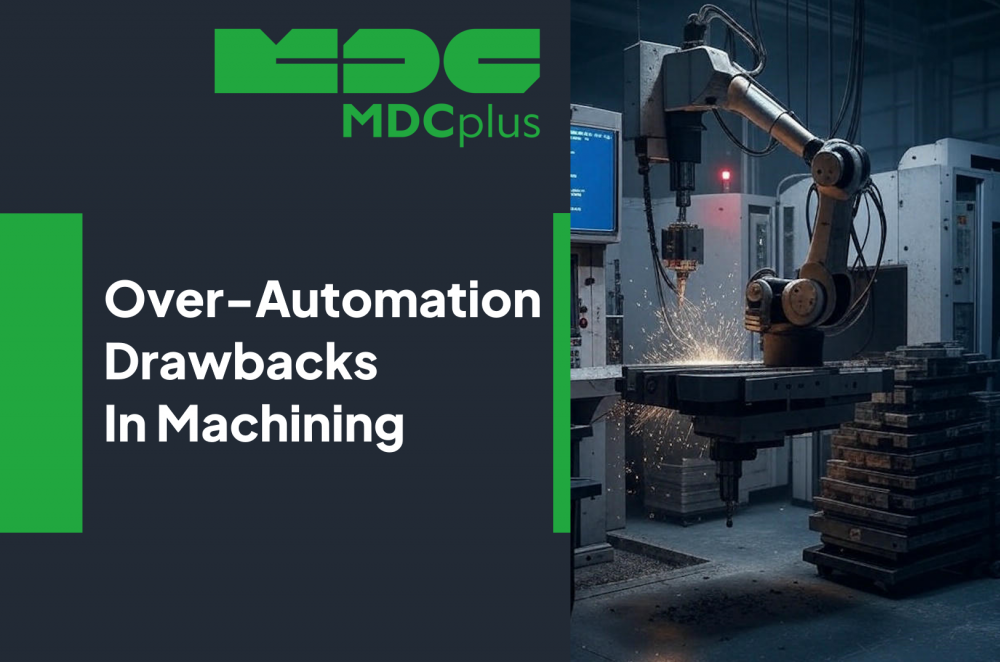No more manufacturing downtimes
Get started with your projectMachining Over-Automation Drawbacks
Over-automation in manufacturing, particularly in machining, presents a range of challenges that can offset its benefits.
Financial Implications and Initial Costs
One of the primary concerns with over-automation is the high initial cost. Setting up fully automated facilities requires significant investment in robotics, AI, and infrastructure, which can be prohibitive for small and medium-sized manufacturers. For machining, this includes costs for advanced CNC machines, robotic arms, and IoT-enabled equipment. A 2023 study estimated that automation implementation for machining shops can range from $500,000 to $2 million for a single production line, with return on investment often taking several years. This financial burden is particularly challenging in regions with abundant cheap labor, where the cost-benefit analysis may not favor automation, as highlighted in a McKinsey report.
Workforce Impacts and Job Losses
Automation reduces the need for manual labor, leading to job losses and raising concerns about unemployment and displacement of skilled workers. In machining, skilled machinists, traditionally reliant on manual expertise for setups and troubleshooting, may become redundant, while new roles for highly specialized technicians emerge. This shift can exacerbate skills gaps, with a 2025 industry survey indicating that 70% of machining shops struggle to hire qualified automation technicians. Employee resistance is another issue, as workers may fear job loss. The human element remains critical, with automation not fully replacing skilled individuals, who may be stuck in repetitive, low-value tasks instead of higher-value roles driving profitability.
Technical Failures and Cybersecurity Risks
Over-reliance on automated systems increases the risk of technical failures, as these systems are complex and require regular maintenance. A single failure, such as a robotic arm malfunction in a machining cell, can halt production entirely, as noted in a 2024 report on manufacturing downtime, which found 60% of automated facilities experienced at least one major disruption annually. Additionally, the increased connectivity through IoT and AI systems heightens cybersecurity risks, with a 2024 cybersecurity report noting that 30% of manufacturing firms experienced attacks targeting automated systems. This is particularly concerning in machining, where sensitive components (e.g., defense or medical parts) are produced, making data theft or ransomware a significant threat.
Lack of Flexibility and Implementation Challenges
Over-automated systems often lack flexibility, optimized for high-volume, repetitive tasks, which is a challenge in machining for custom or low-volume orders. Machines require extensive reprogramming for changes, unlike human workers who can quickly adapt, as highlighted in the YourStory article. Implementation challenges include concerns about floor space, cost, deciding what to automate, and finding skilled employees, as noted in Production Machining. These factors can delay adoption, especially in machining, where precision and adaptability are crucial.
Trust, Reliability, and Labor Shortage Impact
Trust and reliability issues are significant, with lights-out manufacturing requiring proven reliability during manned operations before trusting unmanned nighttime operations, which may delay adoption, as per Okuma. The current labor shortage impacts initial setup and management, with automation not fully replacing the need for skilled individuals, potentially slowing implementation. This is particularly relevant in machining, where skilled machinists are needed for setups and quality checks, as noted in the Okuma article.
Regulatory, Social, and Infrastructure Challenges
Regulatory and social acceptance concerns arise, with issues like the acceptability of machines interacting with humans affecting automation adoption. Infrastructure limitations are another challenge, with low maturity operations lacking robotics, sensors, and data-collection systems, while mid-maturity operations may underutilize existing systems, and high maturity operations may not leverage cutting-edge tech for managerial tasks. These challenges are detailed in the McKinsey report, emphasizing the need for balanced automation strategies.
Drawbacks Summary
Below is a table summarizing the drawbacks of over-automation, categorized by impact area, with specific examples relevant to machining:
| Category | Drawback | How it affects your machining |
|---|---|---|
| Financial | High initial costs | $500,000–$2M for CNC automation, long ROI |
| Workforce | Job losses, employee resistance | Displacement of skilled machinists, fear of redundancy |
| Technical | Technical failures, cybersecurity risks | Robotic arm failure halts production, data theft risk |
| Operational | Lack of flexibility, implementation challenges | Difficulty adapting to custom orders, space constraints |
| Trust and Adoption | Trust and reliability issues | Hesitation for unmanned operations without proven reliability |
| Labor Market | Labor shortage impact | Need for skilled technicians in short supply |
| Regulatory and Social | Acceptance concerns, infrastructure limitations | Concerns about machine-human interaction, lack of sensors |
This table encapsulates the multifaceted challenges, highlighting their relevance to machining where applicable.
Over-automation in manufacturing, especially machining, presents significant challenges that require careful consideration. While it offers efficiency gains, the high costs, workforce impacts, technical risks, and operational limitations suggest a need for a balanced approach, integrating human expertise with automation to mitigate these drawbacks. This article, based on fresh 2025 data, underscores the complexity of achieving optimal automation levels, particularly in precision-driven fields like machining.
About MDCplus
Our key features are real-time machine monitoring for swift issue resolution, power consumption tracking to promote sustainability, computerized maintenance management to reduce downtime, and vibration diagnostics for predictive maintenance. MDCplus's solutions are tailored for diverse industries, including aerospace, automotive, precision machining, and heavy industry. By delivering actionable insights and fostering seamless integration, we empower manufacturers to boost Overall Equipment Effectiveness (OEE), reduce operational costs, and achieve sustainable growth along with future planning.
Ready to increase your OEE, get clearer vision of your shop floor, and predict sustainably?
